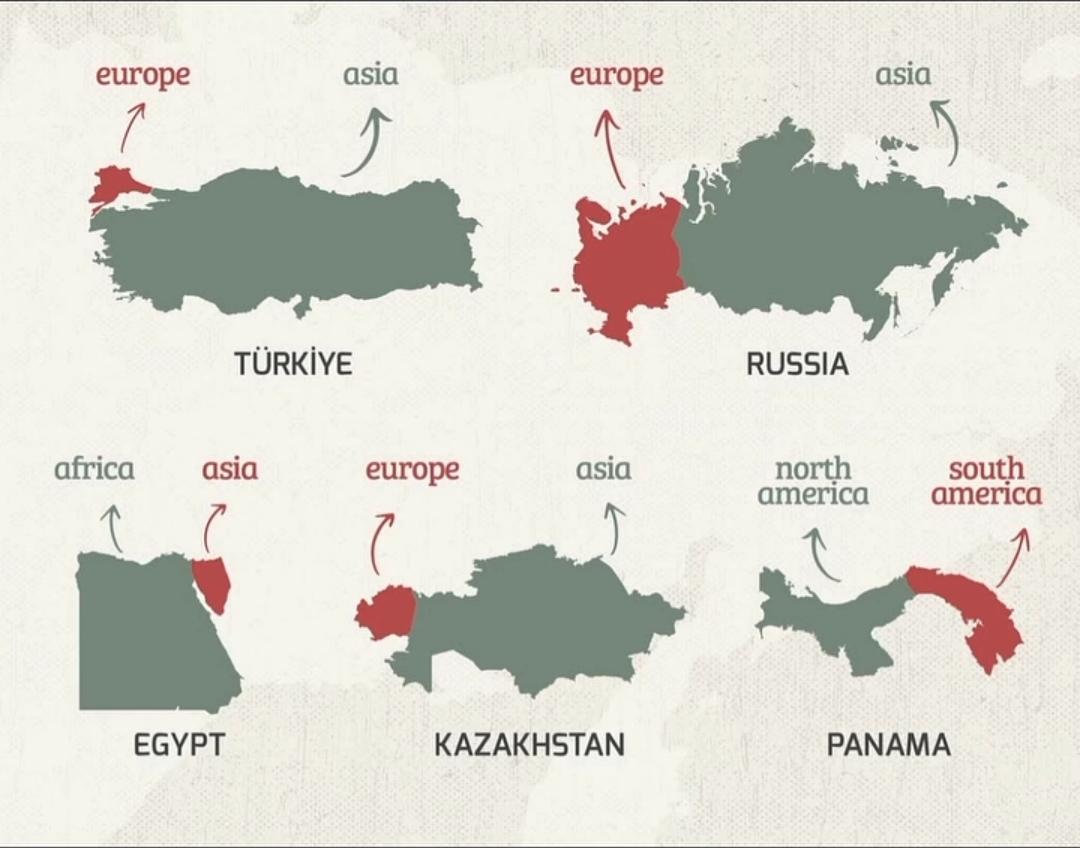Transcontinental Countries Map


Alex Cartwright
Senior Cartographer & GIS Specialist
Alex Cartwright is a renowned cartographer and geographic information systems specialist with over 15 years of experience in spatial analysis and data...
Geographic Analysis
What This Map Shows
This map displays the transcontinental countries—nations that span two or more continents. These unique countries offer a fascinating glimpse into the complexities of geography, culture, and politics. Transcontinental nations often serve as bridges between different parts of the world, influencing trade, diplomacy, and cultural exchange. The most notable examples include Russia, Turkey, Egypt, and Kazakhstan, each with distinct historical and geographical significance.
Deep Dive into Transcontinental Countries
Transcontinental countries are intriguing because they challenge our conventional understanding of geographic boundaries. For instance, Russia is the largest country in the world and extends across Eastern Europe and northern Asia. This vast expanse means it experiences diverse climates, cultures, and economic conditions. In the west, you find bustling cities like Moscow and St. Petersburg, steeped in history and modernity, while the eastern reaches include the vast Siberian wilderness, which is rich in natural resources but sparsely populated.
Turkey is another key example, bridging Europe and Asia. Its geographical position has made it a historical crossroads of civilizations. The Bosphorus Strait, which runs through Istanbul, is a significant waterway that connects the Black Sea to the Mediterranean. This strategic location has historically made Turkey a center for trade and cultural exchange, influencing everything from cuisine to language across continents.
Interestingly, Egypt, often thought of as a purely African nation, also has a foothold in Asia through the Sinai Peninsula. The Suez Canal, located in Egypt, is one of the most important waterways globally, facilitating trade between Europe and Asia and further demonstrating Egypt's transcontinental significance. Kazakhstan, while primarily located in Central Asia, also stretches into Eastern Europe, showcasing a blend of cultures and ethnicities that enhance its unique identity.
Transcontinental countries often face unique geopolitical challenges. For example, Turkey's position has led it to play a significant role in both European and Middle Eastern politics. Its NATO membership and complex relations with the European Union illustrate the intricate balance these nations must maintain between their continental affiliations.
Regional Analysis
When we break down these transcontinental countries by region, we see contrasting characteristics that highlight their unique positions. In Europe, Russia and Turkey stand out. Russia’s vast landmass includes a diverse range of ethnic groups and languages, while Turkey's cultural heritage reflects a blend of European and Middle Eastern influences.
In Africa, Egypt’s historical significance as a civilization contrasts sharply with its ongoing economic challenges. The Nile River, the lifeblood of Egyptian agriculture, runs through the heart of the country, emphasizing the importance of natural resources in shaping a nation's economy.
Meanwhile, Kazakhstan’s position as a transcontinental country is crucial for its economic development. It acts as a land bridge for trade, particularly with China and Russia, and its vast steppe regions are rich in minerals and fossil fuels, vital for its economic growth. However, the challenges of managing such a diverse landscape and population cannot be underestimated.
Significance and Impact
The significance of transcontinental countries goes far beyond their geographical locations. They are often pivotal in global trade routes, cultural exchanges, and political negotiations. Their unique positions allow them to engage with multiple markets and cultures, which can lead to economic opportunities as well as diplomatic challenges.
In an increasingly globalized world, understanding the dynamics of transcontinental countries is essential. For instance, as trade routes shift and new markets emerge, nations like Turkey and Egypt may find their roles evolving. The rise of the Belt and Road Initiative by China also highlights how transcontinental countries can be key players in future economic developments.
Moreover, as climate change impacts different regions differently, transcontinental countries may face unique environmental challenges. For instance, the melting permafrost in Siberia could lead to significant geopolitical and environmental consequences, affecting everything from resource extraction to indigenous communities.
In conclusion, transcontinental countries are more than mere geographical curiosities; they are vibrant, complex nations that play crucial roles on the world stage. Their ability to connect different cultures and economies makes them vital in understanding global trends and challenges.
Visualization Details
- Published
- October 15, 2025
- Views
- 36
Comments
Loading comments...